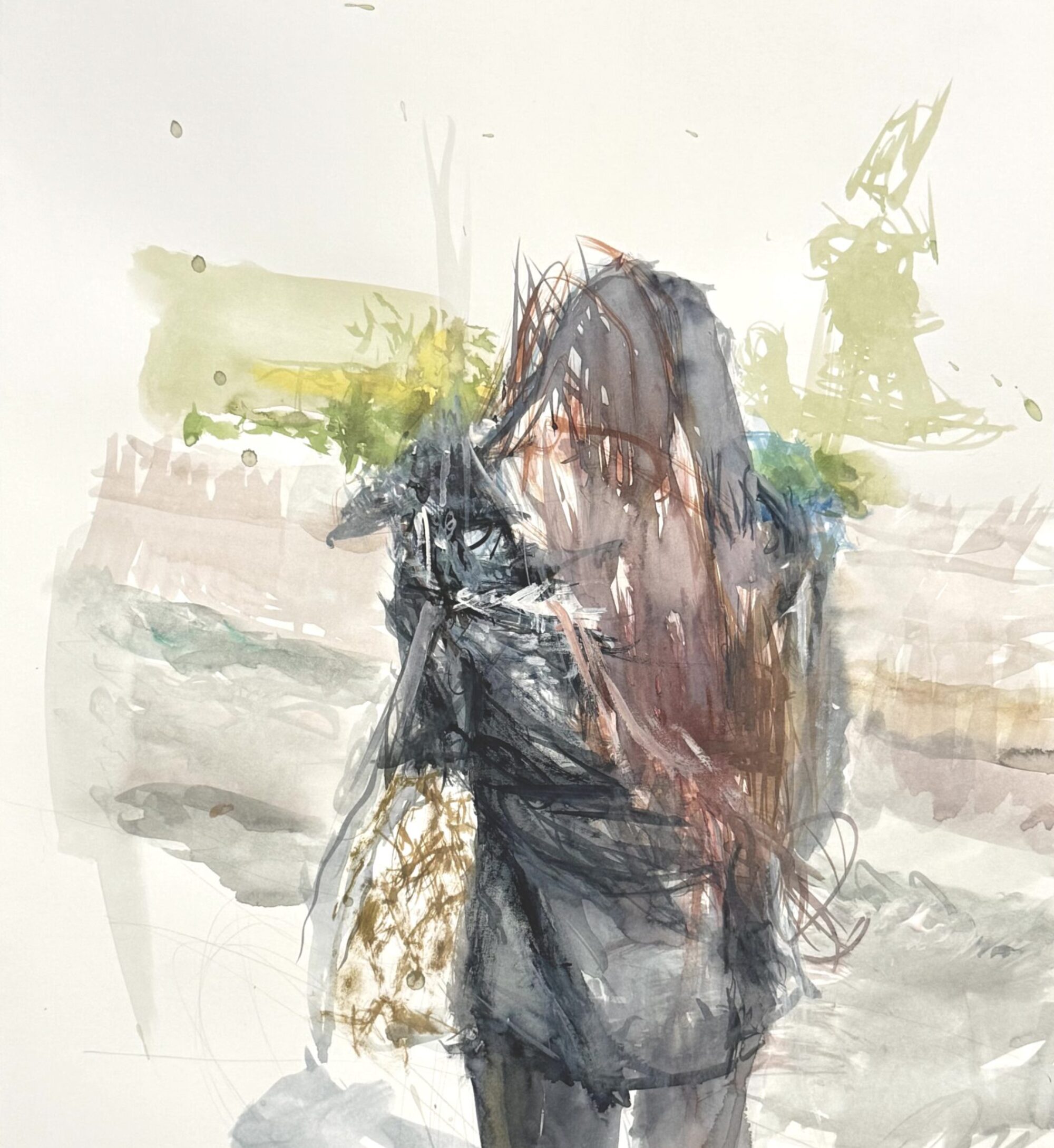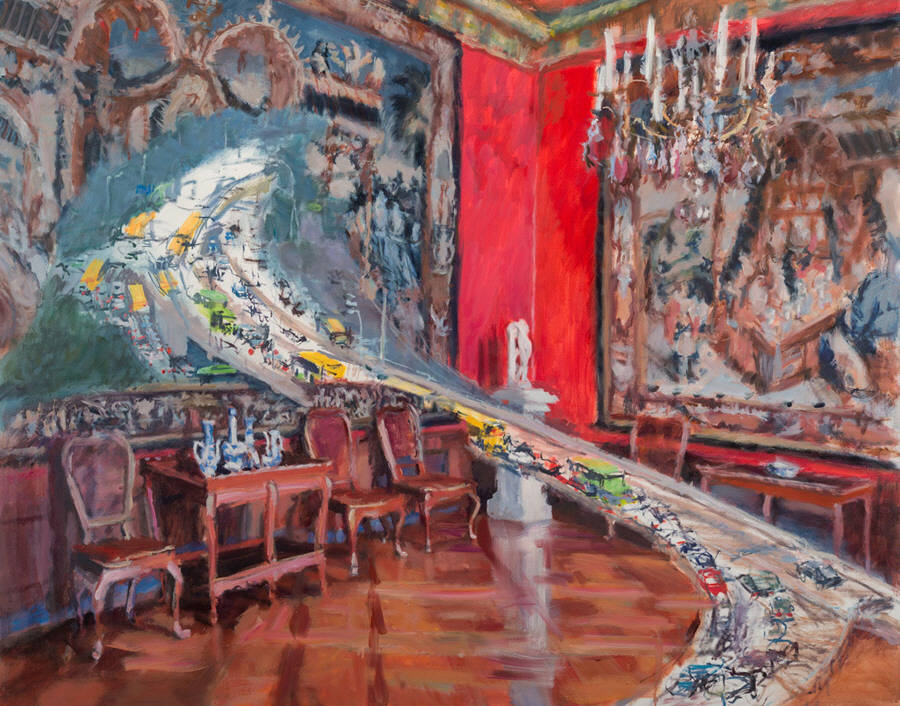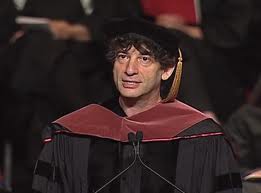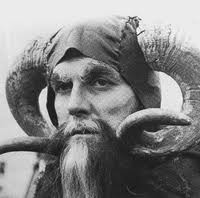See paintings, sculptures, and ceramics from our Permanent Collection that “flow” in different ways. (Featured image: Val Nelson, Rush Hour 2 (2014), oil on canvas, 122 cm x 152 cm. Collection of Surrey Art Gallery, gift of the artist.)
Our world is marked by the ever-present movement of peoples, products, and ideas over vast distances and at rapid speeds. These movements and transmissions dictate the limits of life, the energetic potential of nature, the dynamics of economies, and the transformative potential of society and individuals.

Drawing from Surrey Art Gallery’s permanent collection, the over two dozen artworks presented address numerous themes, including transnational migration, the circulation of information and data, the force of waterways and weather systems, the physical movement of human bodies, and the transportation of materials and products to market by rail or by foot.
Some works, like Val Nelson’s painting Rush Hour 2 (2014), draw attention to the flow of people in our cities. In particular, Nelson’s work examines the relationship between the congestion of our roadways with our culture’s enthusiasm for grand detached homes and single-occupancy vehicles. Delving more into the movement of goods, Sara Graham’s Thornton Railyard, Surrey, BC (2015) uses miniature filigreed collage techniques to depict the contours and history of movement of one of British Columbia’s largest rail yards.

Soheila Esfahani’s The Immigrants: Homage to F.H. Varley (2015) reimagines a classic image of new immigrants arriving in Canada as seen in Varley’s c.1922 painting with found blue and white porcelain plates and custom ceramic decals. Brendan Lee Satish Tang’s brightly coloured clay vessel Manga Ormolu Version 4.1-a (2009) combines stylistic elements from Ming Dynasty era ceramics with techno-pop robotic elements reminiscent of Japanese anime, manga, toys, and video games. Out of Tang’s vessel gushes a black pumice-like ectoplasm meant to evoke both nineteenth-century spiritualism and twentieth-century science fiction. The potential for gushing black liquid of another sort is seen in Edward Burtynsky’s large-scale photographs showing shiny steel liquid natural gas pipelines zig-zagging across British Columbian landscapes.
The wide variety of images and objects make visible some of the most central conflicts and issue of our time.
The opening reception is the evening of April 14th.
We hope that you will be able to join us for the opening and post-opening gathering later that same evening.
Exhibition Details
Location: Surrey Art Gallery – 13750 88 Ave
Price: Free
Date: Apr 14, 2018 – Jun 10, 2018
Hours:
Tuesday – Thursday, 9am – 9pm
Friday, 9am-5pm
Saturday, 10am-5pm
Sunday, 12-5pm
Closed Mondays and holidays


























